Ungated content requires no exchange of information, and it has more SEO value — giving you brand visibility.
Here, we'll explore what gated content is and dive into best practices and examples.
Table of Contents
- What is gated content?
- Best Practices for Gated Content
- Gated Content Examples
- Gated vs. Ungated Content
What is gated content?
Gated content is any type of content that viewers can only access after exchanging their information. Essentially, the content is hidden behind a form. Companies use gated content to generate leads and ultimately, sales.
It's important to note that gated content for inbound marketing is free and not hidden behind a paywall. Users need to submit their information — not their credit card number — to access the content.
Now, you might be wondering, “Why would I hide my content from my audience?”
Typically, the goal of gated content is to generate leads. Gated content isn‘t used for brand awareness or visibility campaigns because the nature of hidden content doesn’t allow for high traffic.
Below, let's discuss the pros and cons of gated versus ungated content.
Gated content is usually protected by a paywall, which allows the publisher to require users to sign up or pay for access.
Pros and Cons of Gated Content
Gated content generates leads you can nurture into prospects, whereas ungated content is meant to increase traffic and improve audience trust.
Both types of content are valuable to your content marketing strategy, as long as you’re finding the right balance for your business goals.
After reading this list, you might be wondering, “How do I know if I should gate my content?”
Well, it all depends on your priorities — brand visibility or lead generation.
Additionally, consider the type of content. Longer-form content like an ebook is well-suited to gated content, while most shorter-form content like blog posts are better off ungated.
Once you‘ve decided to create gated content, you’re probably curious about how to get started. Let's review some best practices below.
Best Practices for Gated Content
- Create content for each stage in the buyer's journey.
- Complete a competitive analysis.
- Provide incentive.
- Build a strong landing page.
- Segment your audience.
- Measure the analytics.
1. Create content for each stage in the buyer's journey.
When a prospect goes through the buyer‘s journey, they’ll go through three stages: awareness, consideration, and decision.
Here's a quick rundown of each stage:
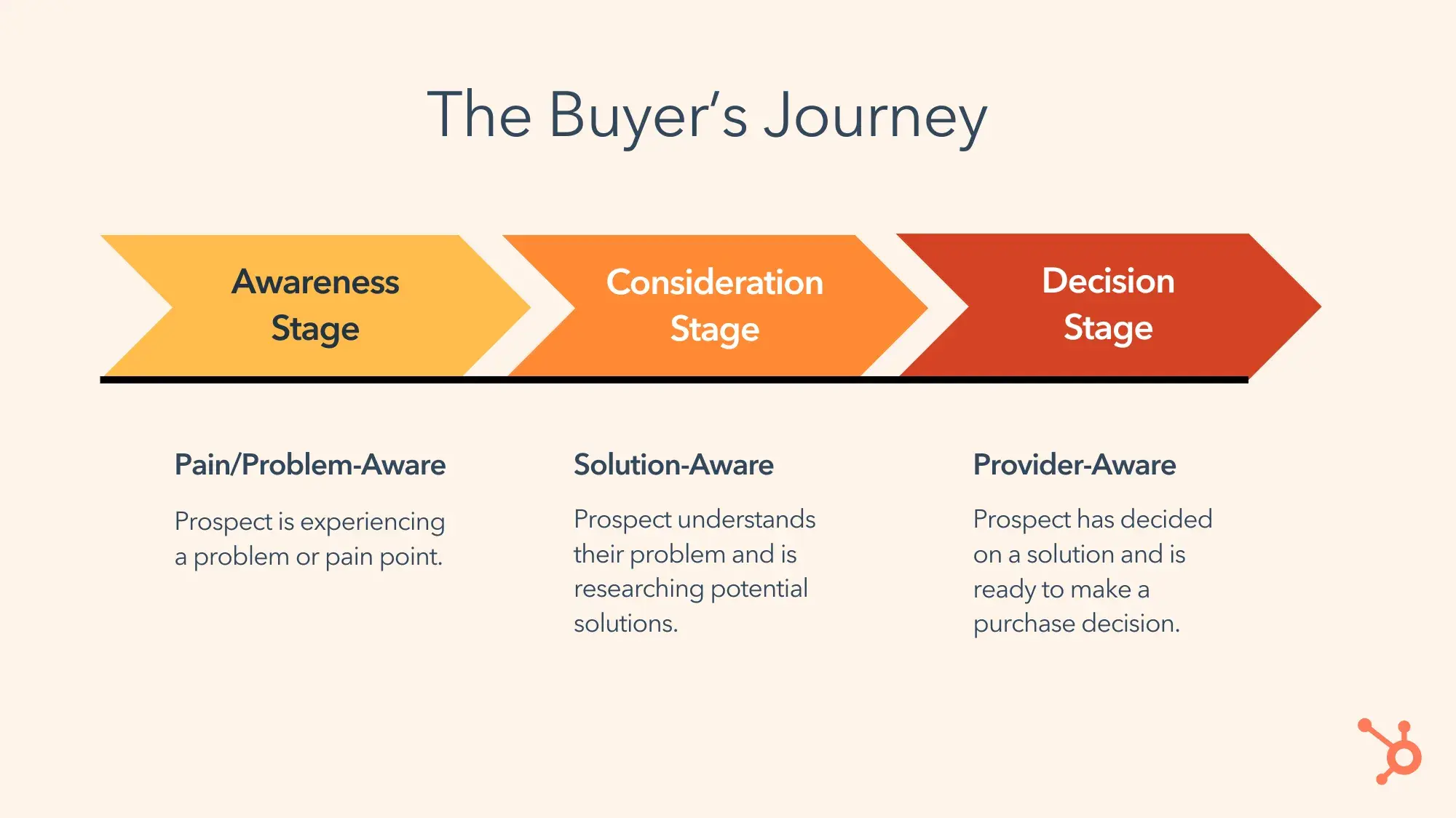
During each stage, your audience needs content that meets them where they are.
For instance, visitors in the awareness stage are probably interested in reading an ebook. On the other hand, a visitor in the decision stage might prefer a product demo or webinar.
That‘s why it’s important to design content offers for each stage of the buyer's journey. If your gated content aligns with their stage in the journey, your audience is more likely to convert.
2. Complete a competitive analysis.
Once you‘ve brainstormed some content ideas for each stage of the buyer’s journey, it's time to conduct a competitive analysis.
In a competitive analysis, you'll research the types of content your competitors offer. activities.
Pay attention to what content is gated versus ungated — this will give you an idea of what types of content are valuable enough to place behind a gate.
3. Provide incentive.
As an inbound marketer, you know that providing value is of the utmost importance.
Your content offer shouldn't be a quick blog post. Instead, your gated content should provide actionable, valuable content.
Just as importantly, your gated content should be relevant to your audience.
When your content provides true value, it gives your audience an incentive to fill out that form and give you their contact information.
4. Build a strong landing page.
When a user clicks on a CTA for a content offer, they're usually led to a landing page. So, one of the best practices for gated content is to build a strong landing page (we’ve got 41 examples if you need some inspo).
For example, HubSpot's State of Marketing report landing page contains a strong headline, compelling copy, and a sneak preview of some of the key findings.
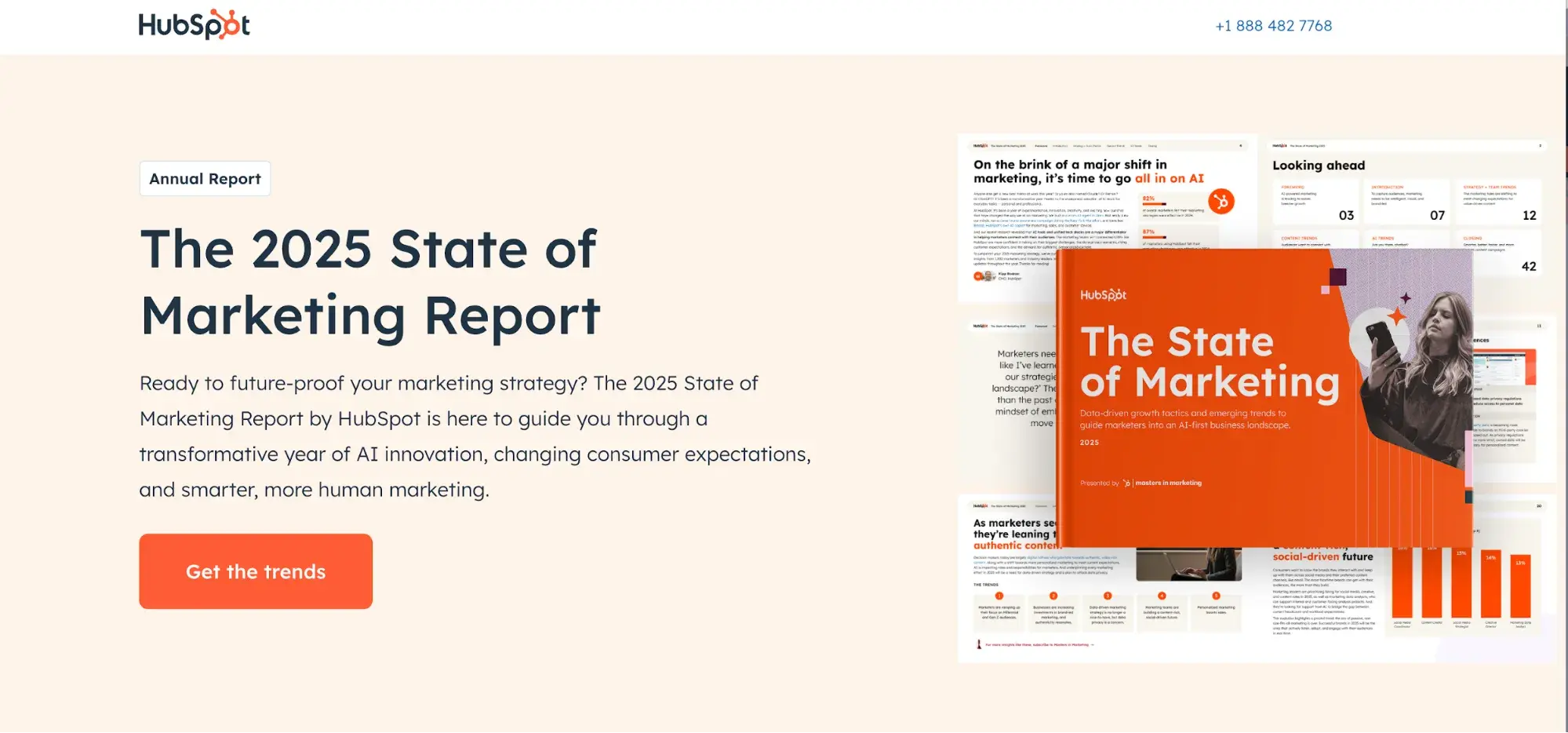
Once you decide to download, the form is simple and fast.
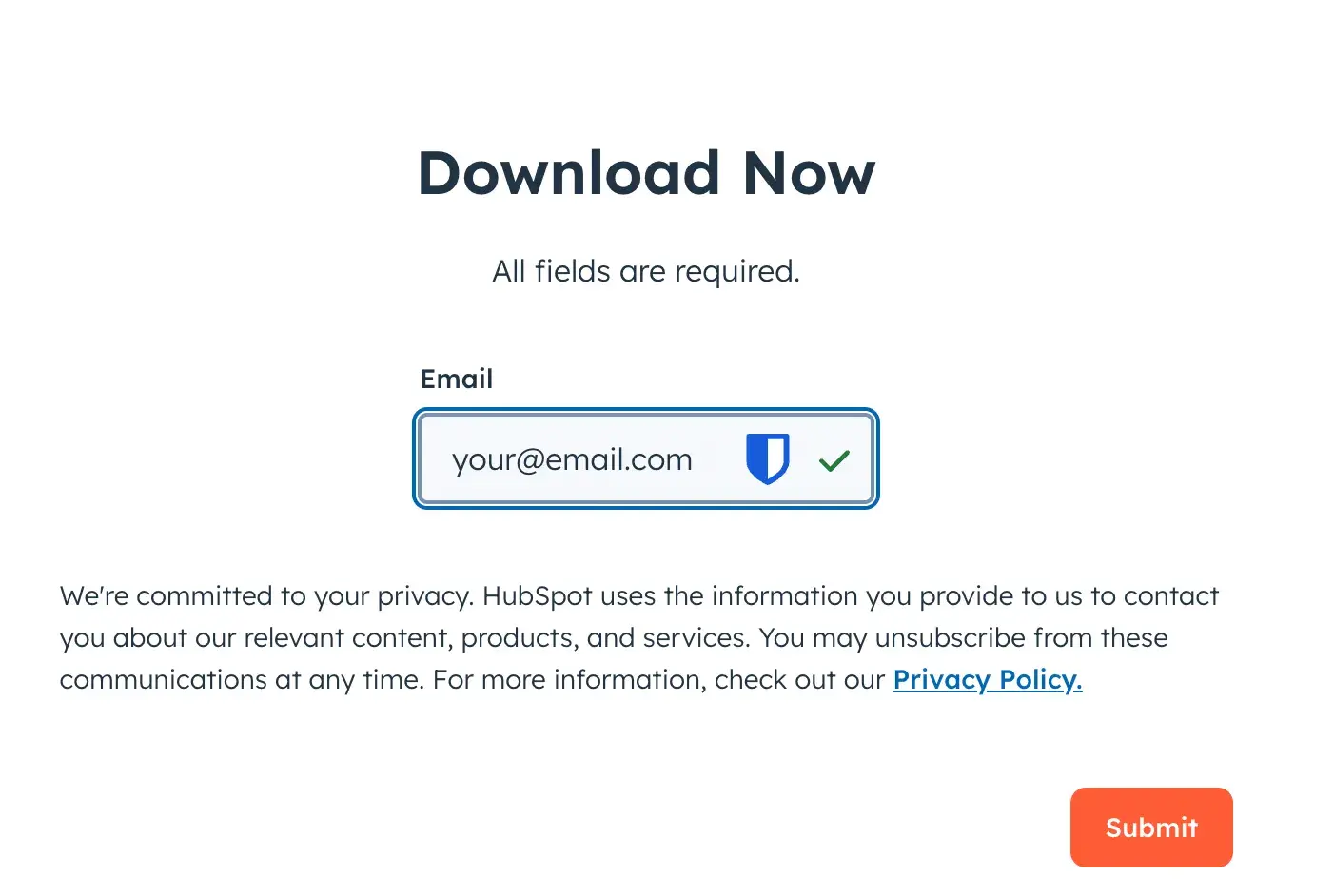
The technical steps for gating your content will vary depending on your CMS. But chances are, your landing page will include a form where visitors can input their contact details in exchange for your content offer. It's important that your form is straightforward, easy to use, and user-friendly.
HubSpot offers a free online form builder that enables you to create and customize forms with a drag-and-drop form maker.
5. Segment your audience.
Once your audience has downloaded your gated content and you receive their email address, it's time to segment your email lists.
This will help you develop targeted and effective email marketing campaigns.
Additionally, segmenting your audience means you can send nurturing emails to move those leads to prospects.
6. Measure the analytics.
When you've decided to gate a certain piece of content, you can track conversions and measure your analytics.
As with any marketing strategy, measuring your success is extremely important. This data will help you understand your audience better and improve your content strategy.
Now that you know some best practices for creating gated content, let's look at types of content and examples of what this will look like in action.
Gated Content Examples
There’s lots of ways you can build gated content landing pages — here’s five of the most common types of content that businesses gate.
1. White Papers, Case Studies, and Other Reports
White papers, case studies, and other reports are great examples of gated content because they can provide targeted value to your audience.
A white paper is an authoritative, in-depth report on a specific topic; case studies look at a specific use case; and other reports might not fall into either category but still use a text-heavy, longer-form format. (Think: HubSpot’s State of Marketing report.)
All three of these content types can position your brand as an industry expert. And when you‘re a trusted expert, people want to know what you have to say — which means you’ll get more downloads and conversions.
Usually, offers are long-form content that are interesting and valuable to your audience, like this one from IMO Health about high-quality medical data and research.
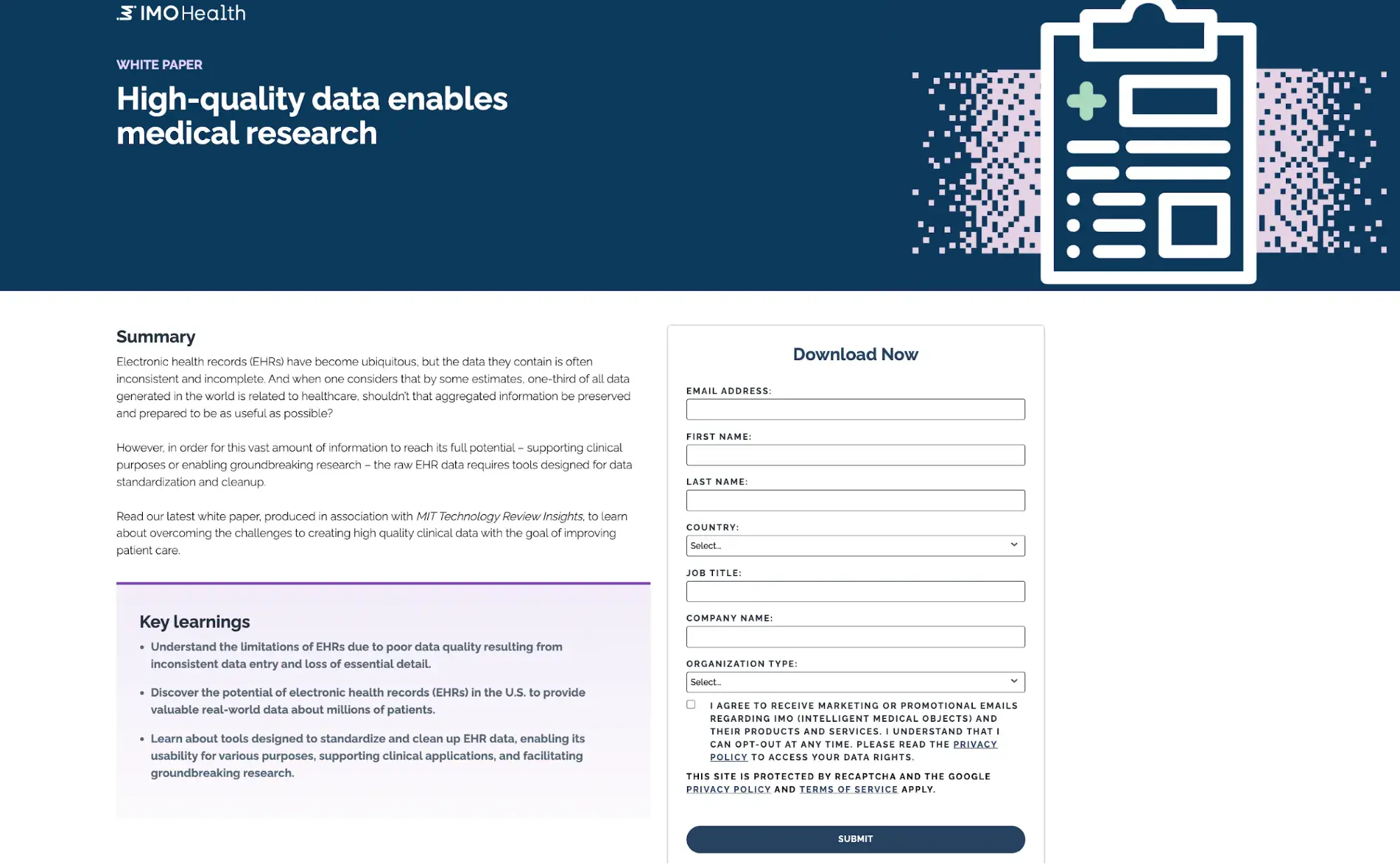
Pro tip: Give your audience a taste of the content. The above example includes a few key learnings that prove its value and entice its audience to fill out the form.
StrataBeat’s 2025 B2B SEO Performance Report is a good example of a gated report. The landing page clearly states what the product is, and the description — “Unlock superior SEO performance with insights from an analysis of 300 B2B SaaS websites” — emphasizes high-quality data and even includes the size of the study.
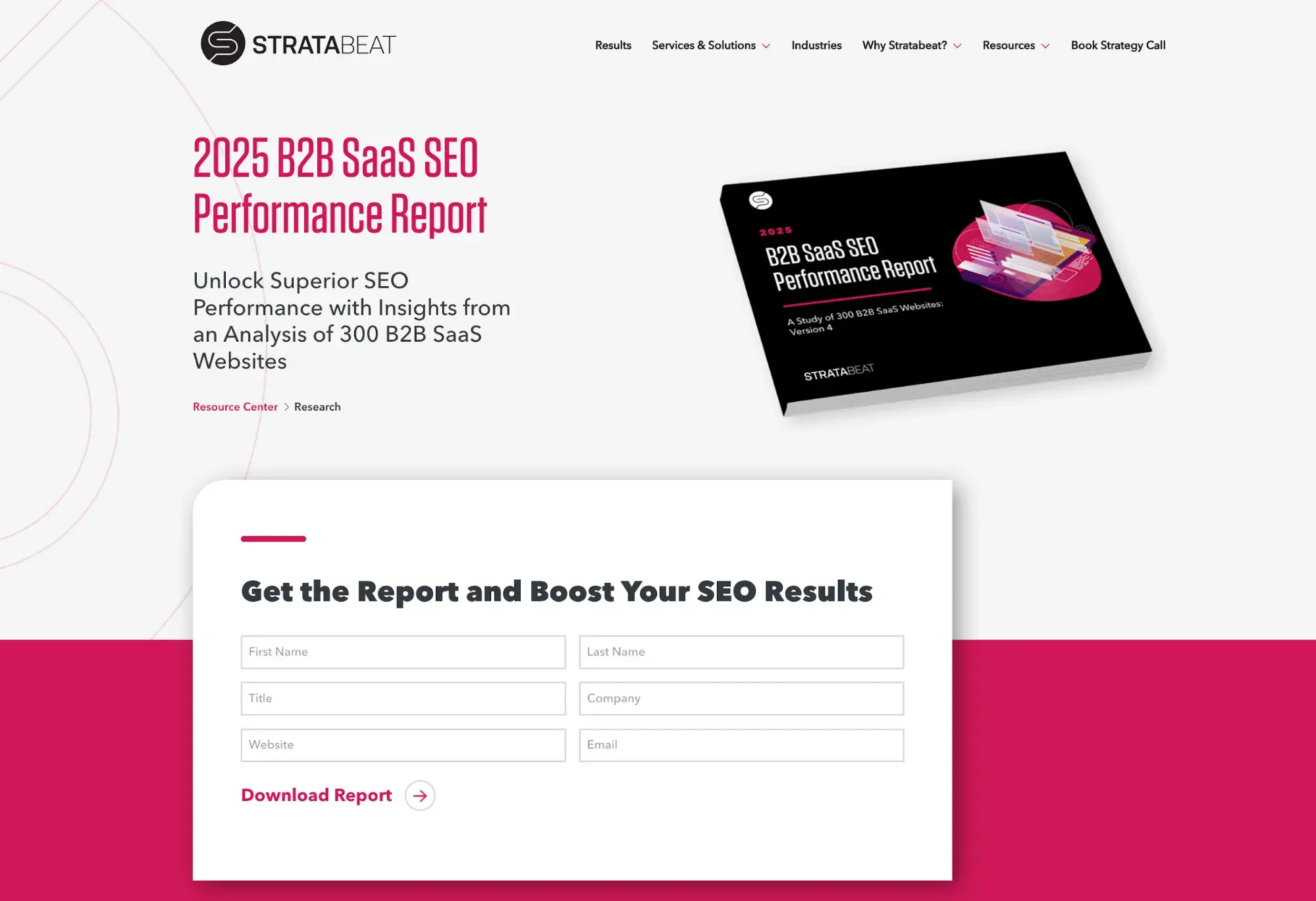
There’s also a graphic of the report, which suggests a beautifully designed, thoughtfully produced content offer. The CTA, “Get the report and boost your SEO results,” promises that providing your information will be worth your while, and you can see all six information fields you need to fill out.
2. Ebooks
An ebook is another popular type of gated content. Unlike a white paper, an ebook is usually a shorter guide on a specific topic.
Ebooks can also establish your brand authority and build trust with your audience. They are usually used in the awareness and consideration stages of the buyer's journey.
IMO Health also has multiple gated ebooks that require your contact information before you can hit that “download” button.
This one, entitled AI in healthcare: 6 solutions driving efficiency and innovation, includes a few bullet points of what you’ll learn, ensuring that it finds the right audience.
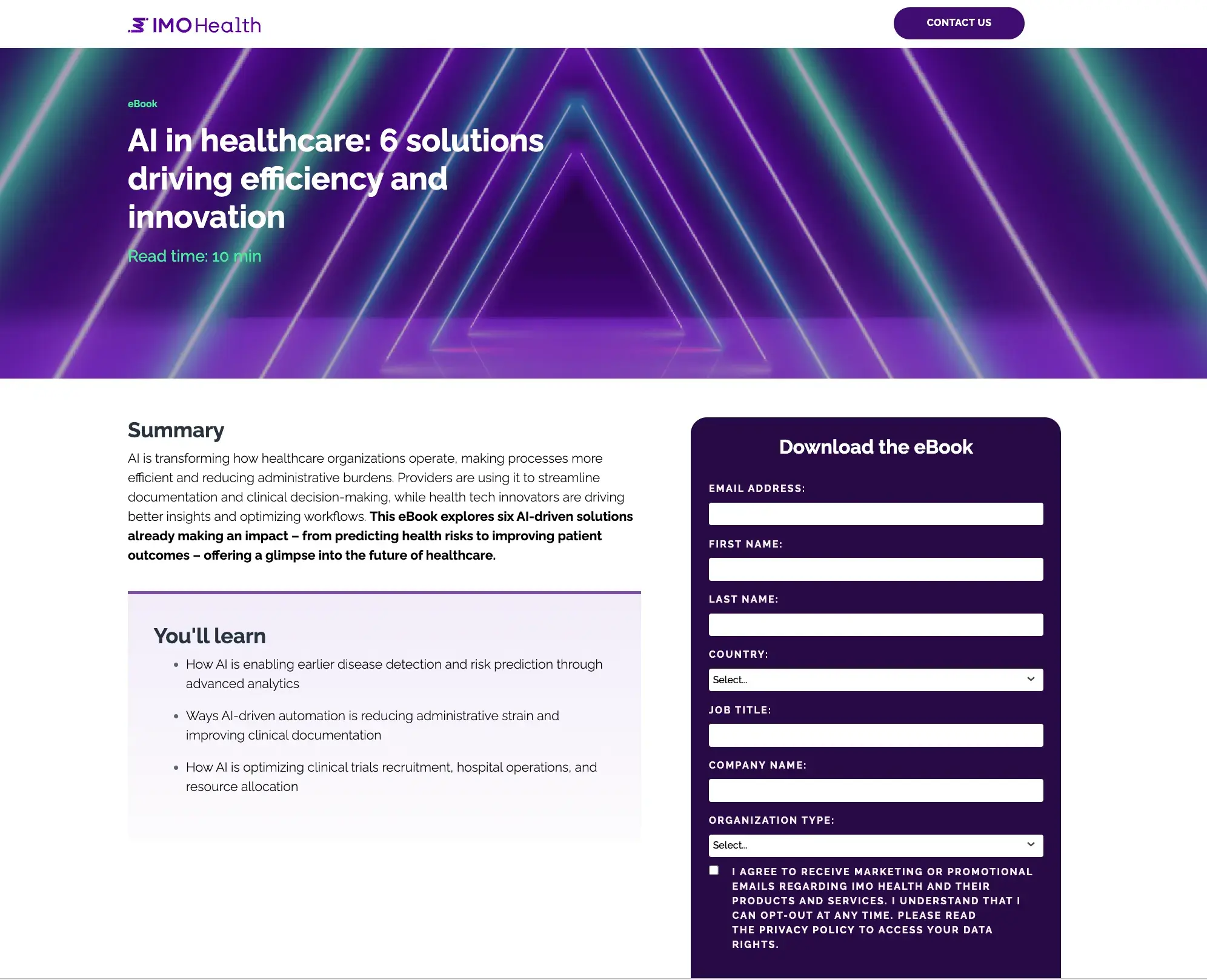
Pro tip: Tell your readers how long the ebook is so they know what they’re getting into. IMO Health, above, includes the read time just below the title.
3. Templates
One of my favorite forms of gated content is the template. Providing a template is a tactical, actionable piece of content.
The perceived value of a template is much higher than that of an ebook and a white paper, which means your audience is more likely to input their contact information to receive it.
Templates are a great gated content offer for folks in the consideration and decision stage of the buyer's journey.
SlidesGo, which publishes free templates for PowerPoint and Google Slides, gates much of its premium content:
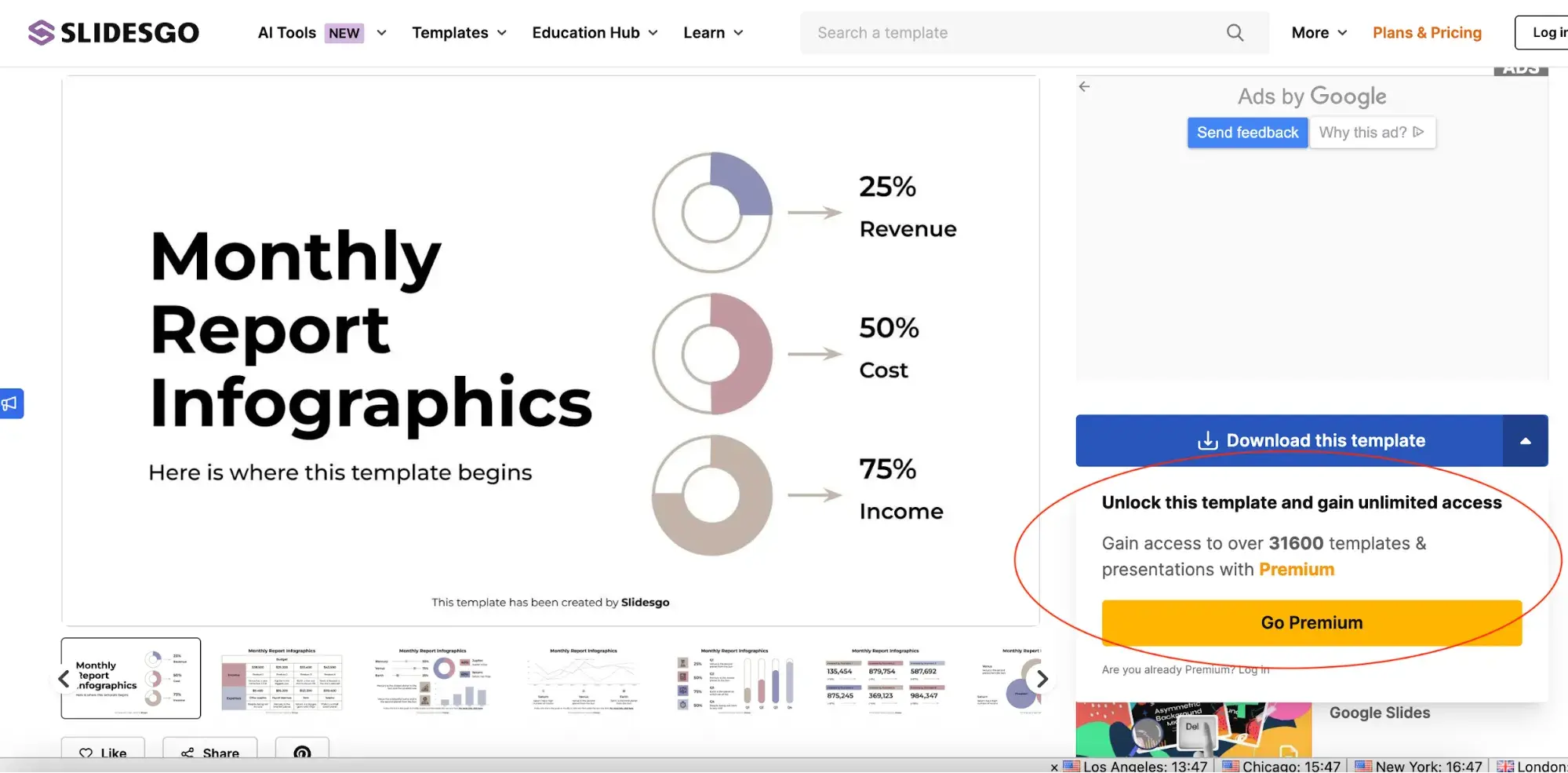
Pro tip: You can still preview all of the slides in the template, so users know exactly what they’re getting when they hand over their email address.
4. Webinars
With a webinar, you‘ll educate your audience to learn more about a topic. You’ll develop trust, build relationships, and, hopefully, inspire.
For prospects in the decision stage of the buyer's journey, webinars make an excellent gated content offer.
Again, webinars have a high perceived value, which makes your audience more likely to fill out that form.
5. Quizzes
If you’re a person who wears makeup and you’ve been on Instagram or TikTok in the past couple years, you’ve probably been targeted by Il Makiage, a cosmetics company with a particularly large range of foundation shades.
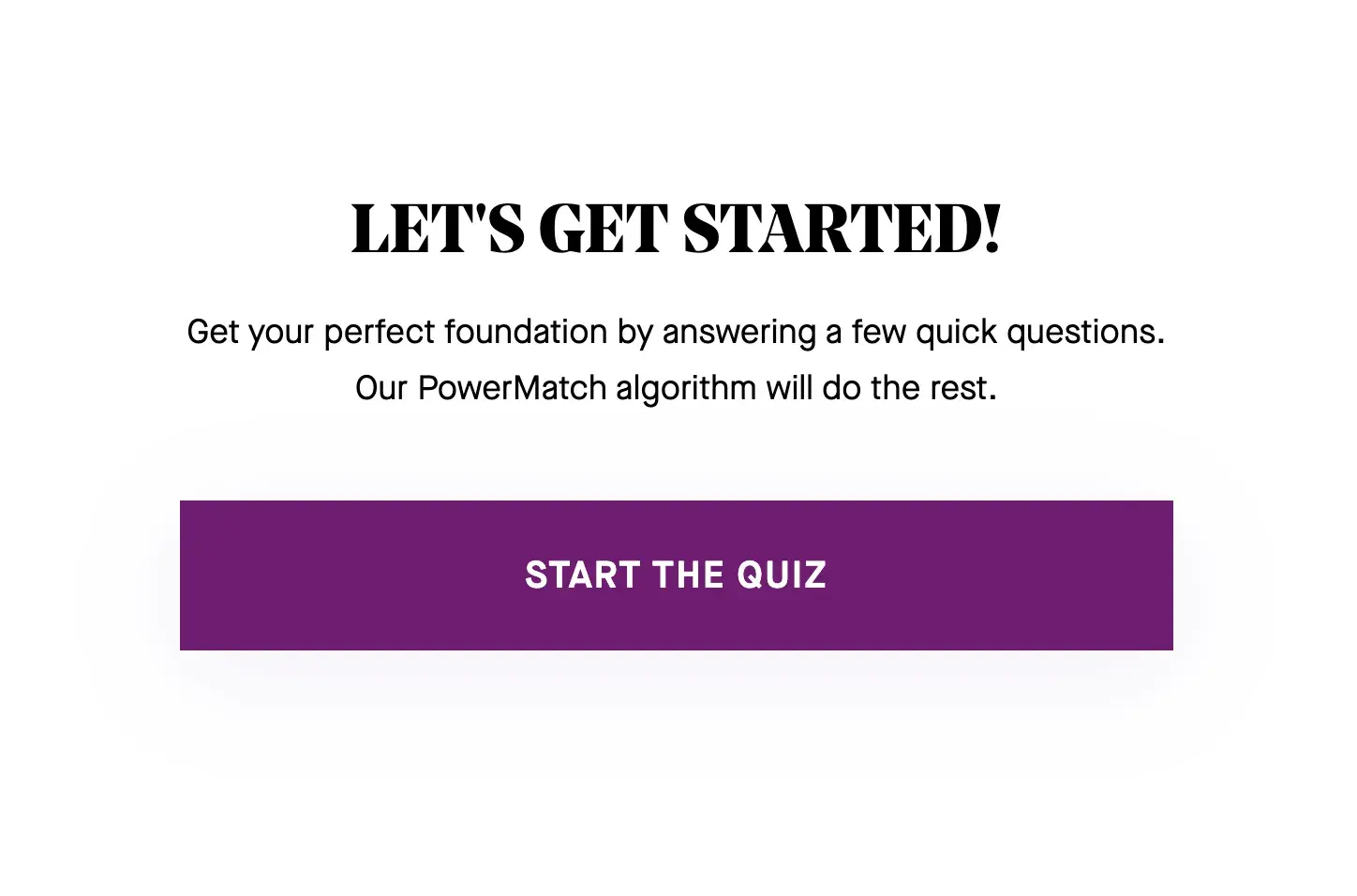
After enticing you with before-and-after pics of models (whose perfect skin somehow looks even more perfect after Il Makiage foundation), the makeup company promises that its “PowerMatch algorithm” will find a shade that perfectly matches your skin tone—no in-store swatching required.
After you’ve devoted several minutes of your time — which is a lot in a world where 30-second videos rule — Il Makiage asks for your contact info before revealing your foundation color.
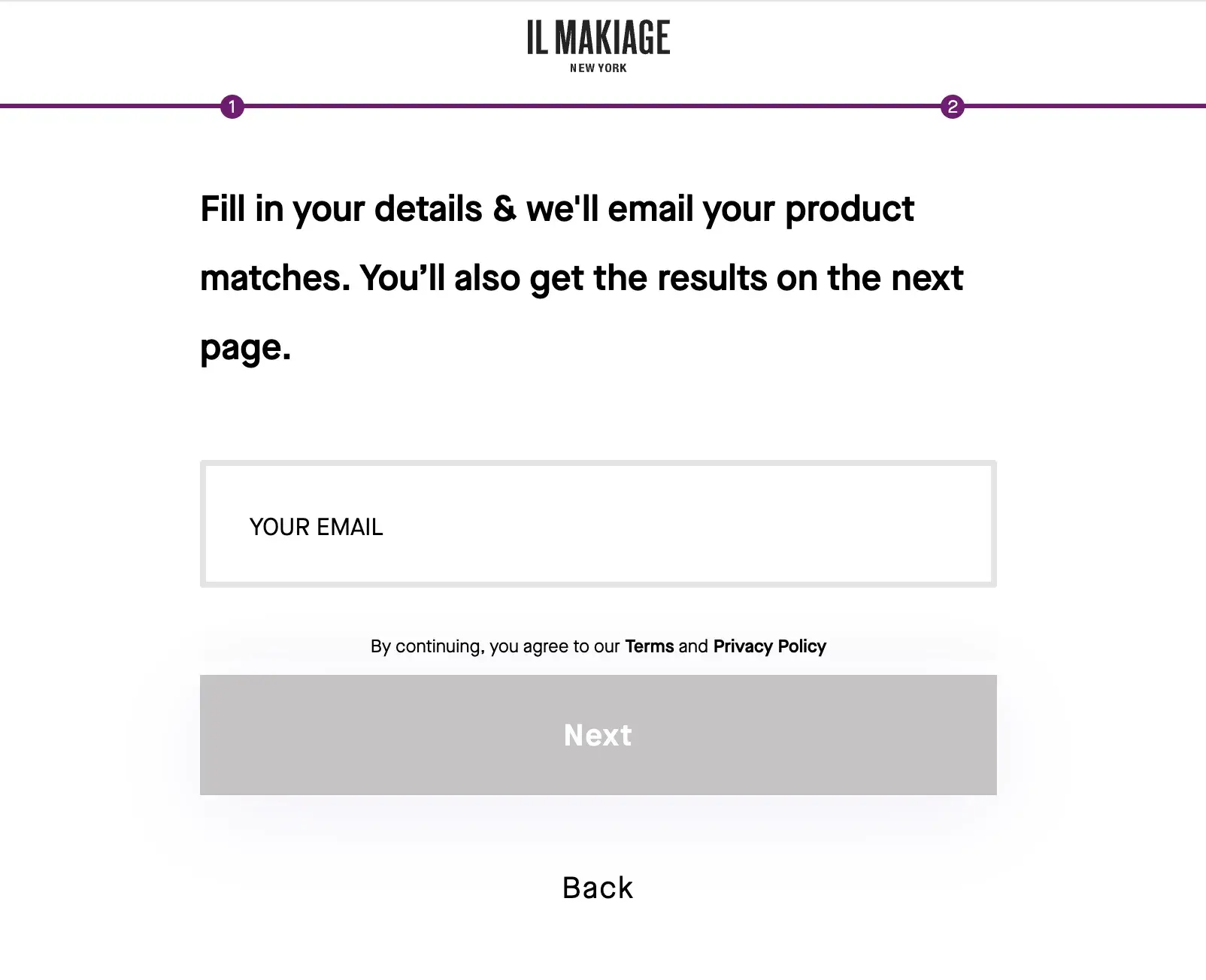
Pro tip: Putting the ask after the quiz means that the user has already invested their time and is more likely to fork over their email. (And I can tell you from personal experience that it’s really hard to walk away from the promise of perfect skin.)
Gated vs. Ungated Content
With gated content, it's important to provide your audience with interesting and relevant offers. Ultimately, gated content should be targeted and help you generate leads. Remember that scale from the beginning: You’ll want to find a balance between brand visibility and lead gen, so gate wisely — and with your audience’s needs in mind.
Editor's note: This post was originally published in July 2017 and has been updated for comprehensiveness.
Lead Generation

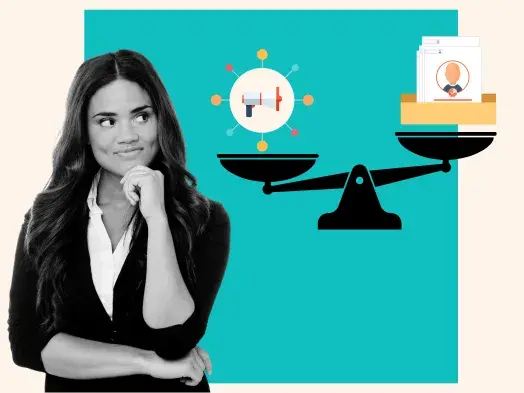
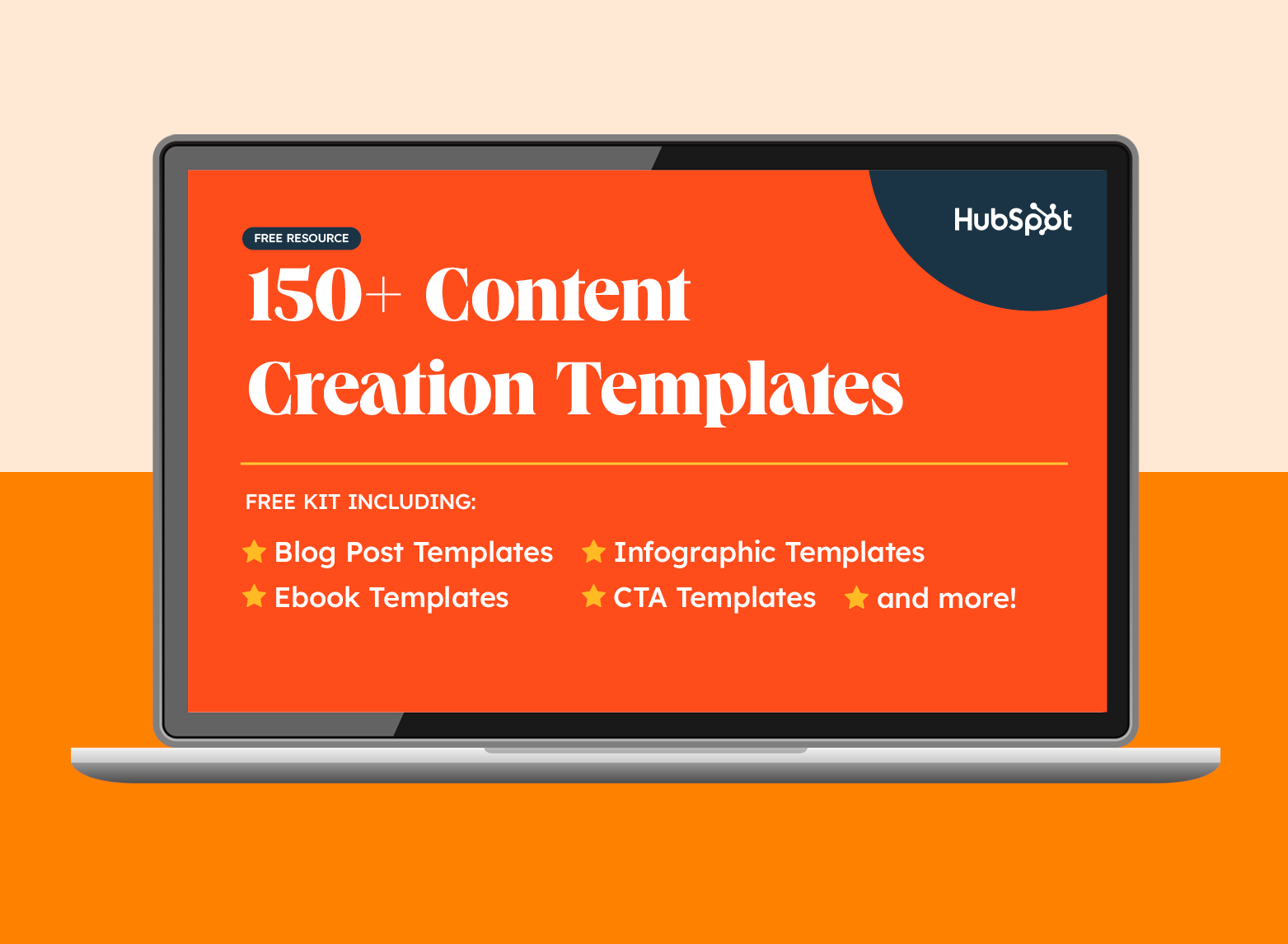
![What is a lead magnet? 20 lead magnet ideas and examples [+ step-by-step]](https://53.fs1.hubspotusercontent-na1.net/hubfs/53/lead%20magnet%20represented%20by%20a%20magnet.webp)

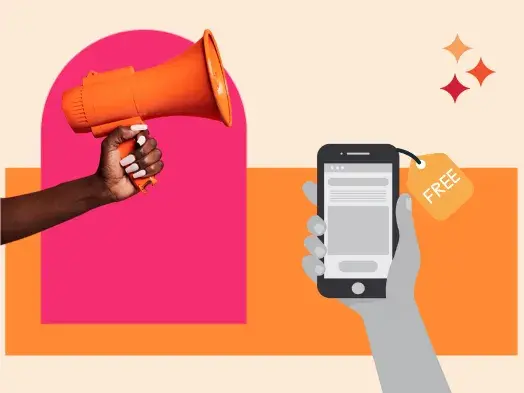



![What Is Demand Generation? Here’s How You Can Create Buzz for Your Offering [FAQs]](https://53.fs1.hubspotusercontent-na1.net/hubfs/53/demand-generation-1-20250321-225687.webp)

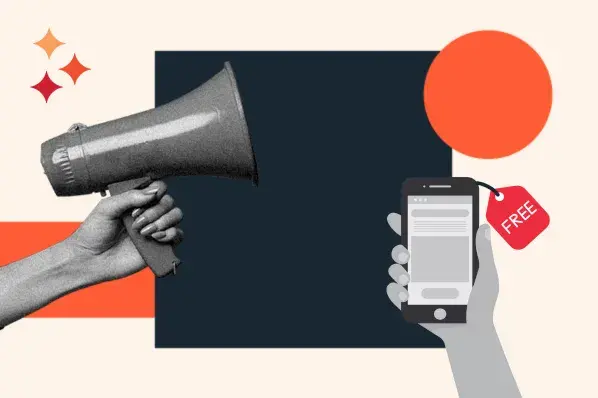
![Lead Generation Content: Top Types to Use [Data + Expert Tips]](https://53.fs1.hubspotusercontent-na1.net/hubfs/53/lead%20generation%20content.webp)